8 Magical Towns in Central Istria that Are Absolutely Worth Visiting
May 30, 2022 - Istria is one of the most fascinating regions of Croatia, and while most are more familiar with its magical seaside towns like Pula, Rovinj, Umag, or Poreč, the many medieval towns in Central Istria are just as impressive and definitely worth being explored.
In recent years, Istria has shown its might as a tourist destination, defying the surreal circumstances caused by the coronavirus pandemic by being easily reached by land from other European countries. But Istria is not at all a consolation prize for its proximity, quite the opposite. The largest peninsula in the Adriatic is home to spectacular towns, world-renowned wines and olive oils, unique cuisine, numerous beaches, five-star hotels, and a wealth of culture and history.
But not everyone comes up with an idea of this region beyond the sea, the islands, and the beaches, something that happens similarly in Dalmatia. Some forget that much of Istria's magic lies (not so) far from the coast. With this in mind, here we show you some of the best destinations you can visit in Central Istria. Warning: Not to be confused with Central Istria as a public administration, since it only covers some districts. In this article, we will mention destinations on the Istrian peninsula that are not located by the sea.
Pazin
Located right in the heart of Istria, Pazin is known for medieval Pazin Castle, the former residence of the Istrian margraves. The intensity of life here is pretty much the same in winter and summer, with the monthly exception of every first Tuesday, when a flood of curious buyers from all over Istria runs into the town to visit the traditional Pazin Market. Pazin is very rich in culture and history due to the presence of different civilizations, empires, and governments throughout time. Be sure to visit the Pazin castle, the Pazin abyss, the Franciscan monastery, the Memorial Center of Union and Freedom, the state archives, and more. Learn more about Pazin here.
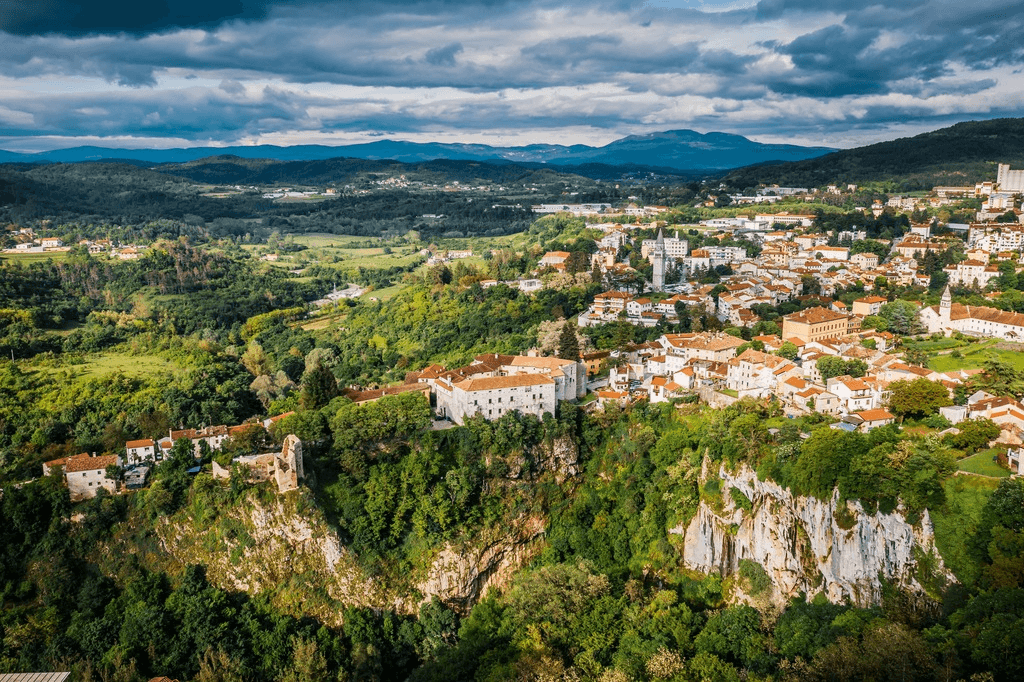
Image: Tourist Board of Central Istria/Official Website
Motovun
Motovun sits on top of a hill towering over the valley of Mirna, the biggest Istrian river. The location was settled since Celtic times, but the town we know today was mostly built under Venetian rule in the Middle Ages. Its centuries-old walls and buildings are the best preserved in Istria, giving the place a unique charm. Yet Motovun is more than its quaint architecture and breathtaking view. It is the Croatian capital of truffles and hosts a famous film festival, which will take place from July 26 to 30 this year. Learn more about Motovun here.
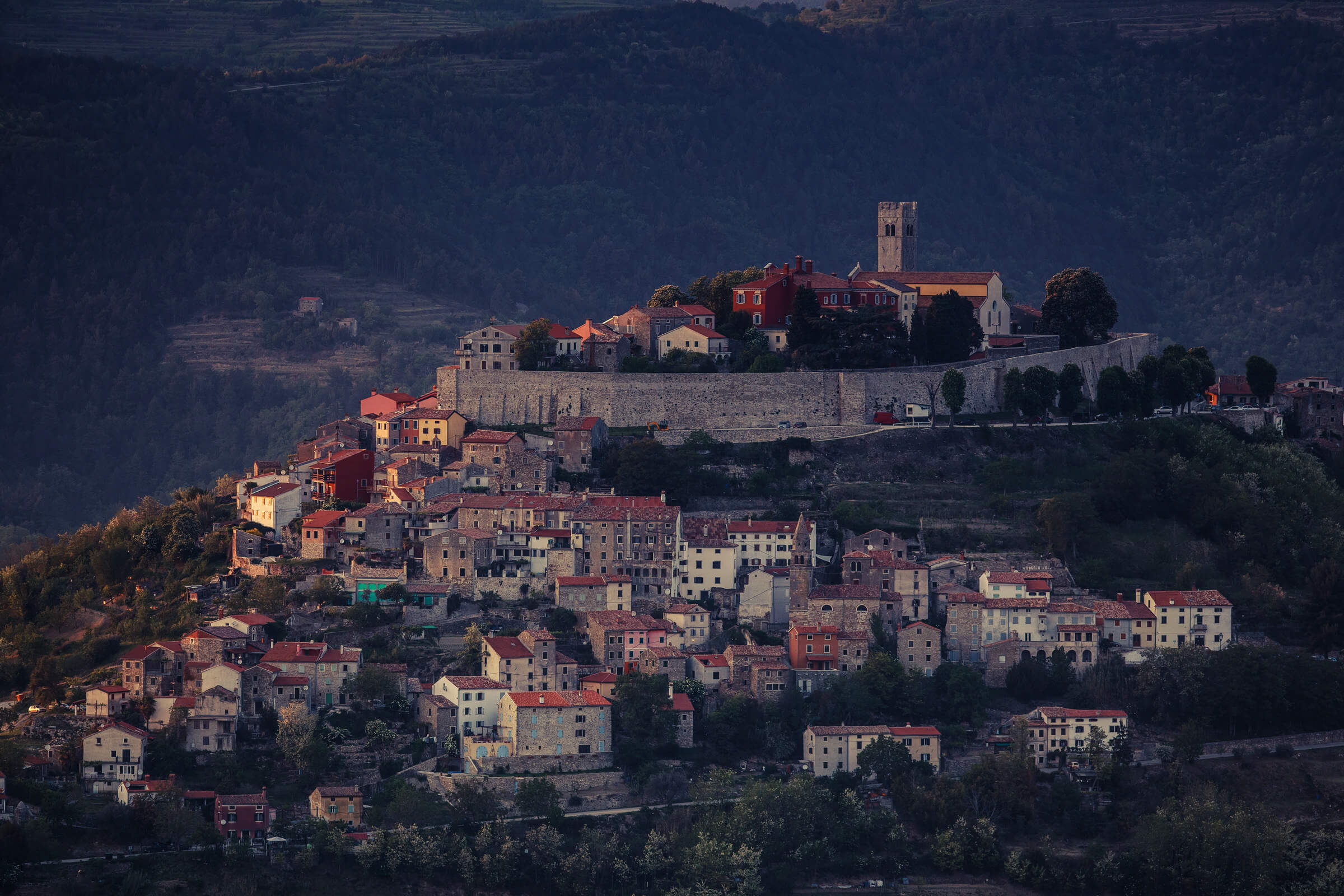
Photo: Mario Romulić
Hum
Often referred to as the smallest town in the world, Hum is a town situated on a hilltop above the source of the Mirna River. It is located in the vicinity of Buzet and Roč. The towns of Roč and Hum have been connected through a shared history and culture since ancient times, and are now also connected by the famous Glagolitic Alley. Hum has just 20 inhabitants, and therefore its well-known name as the smallest town in the world. Learn more from Hum here.
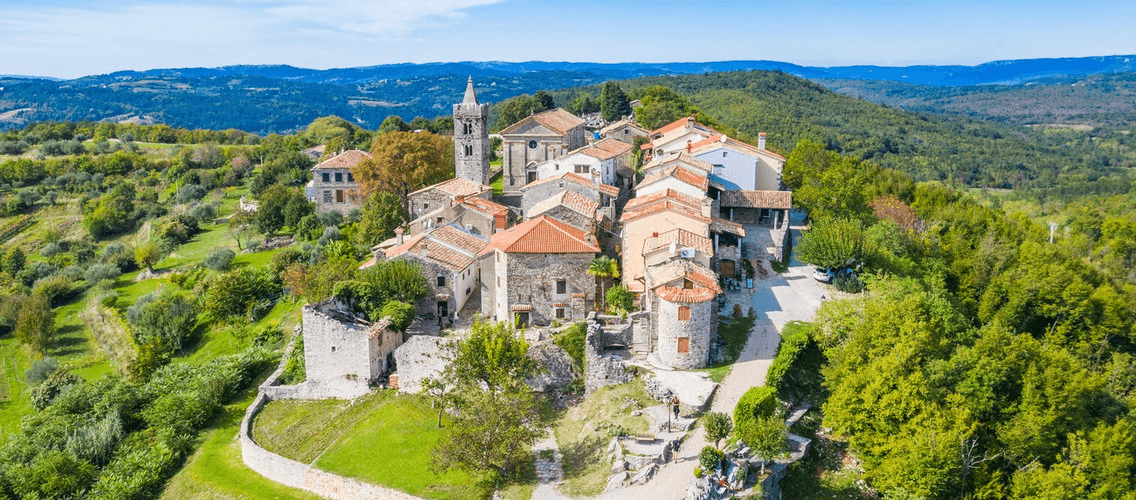
Image: www.valamar-experience.com
Labin
Labin is the biggest town in the otherwise not-so-populated and not-so-popular eastern Istria. In the past, the town was known for its coal mines. Nowadays, all the mines have been closed, and there are no more miners. The community is turning more and more towards tourism - but is far from being overwhelmed by it. Its old town, sitting on top of a hill, is among the most beautiful ones on the peninsula. Although it's not located by the sea, and exactly because of that, Labin has a stunning view of Kvarner bay. Learn more about Labin here.
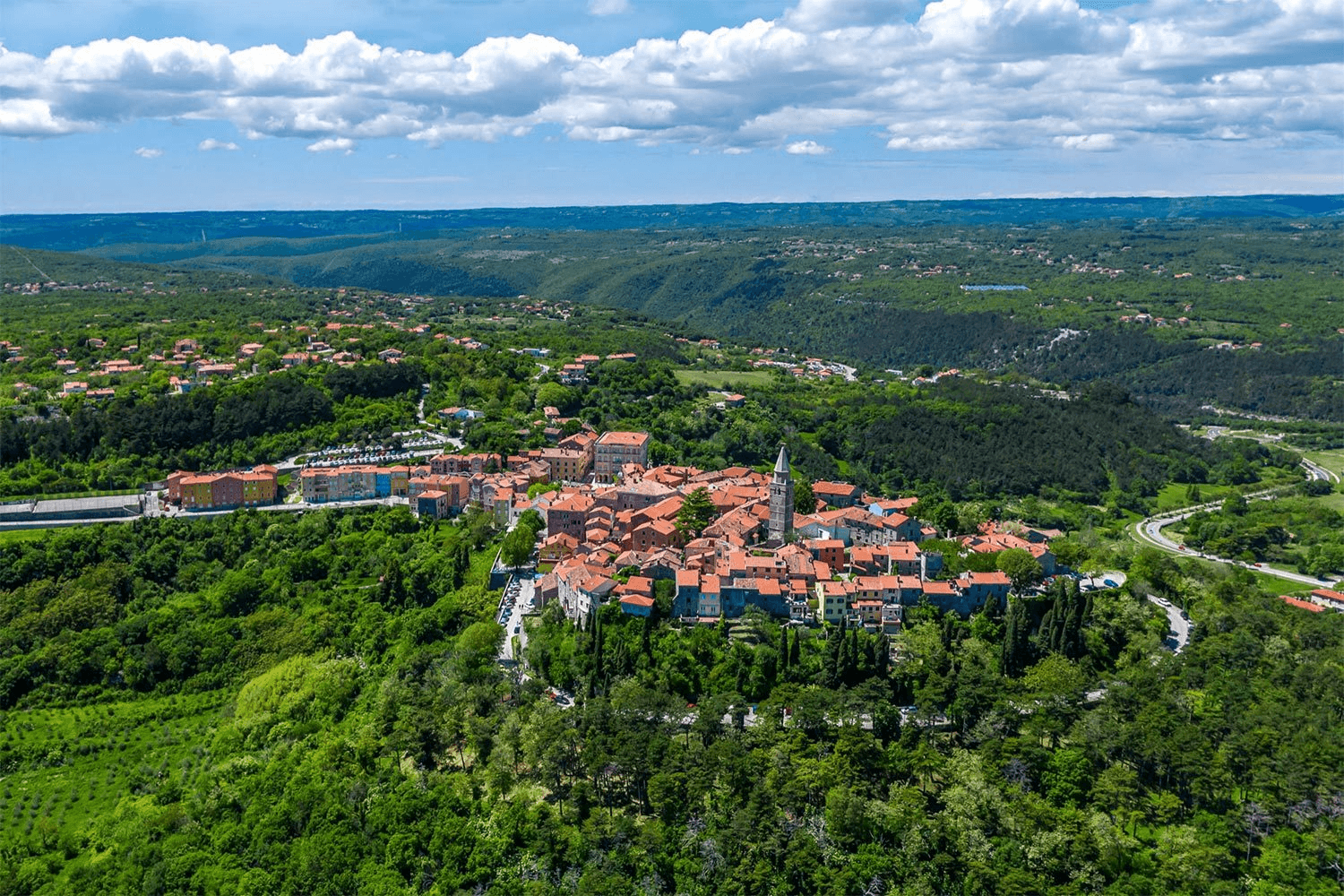
Image: Labin-Rabac Tourist Board/Official website
Vodnjan
Vodnjan is situated near Pula, where excellent olive oil is produced, and its surroundings have the largest number of kažun houses, dry-stone houses in the Mediterranean. The largest church in Istria –Parish Church of St Blase was built at the end of the 18th century, with the 63-meter-high bell tower. The church holds a valuable collection of sacral art and preserved bodies of saints, the so-called Vodnjan mummies, due to which it is visited by around 16000 people a year. Learn more from Vodnjan here.

Image: www.visit-croatia.hr
Buje
The area of the town of Buje is located in the northwestern part of the Istrian peninsula. Approximately 5,300 inhabitants live in an area of 103.40 km2. The town of Buje is located between the rivers Mirna and Dragonja. In the north, there are the hills of the Upper Buje, and in the south the Adriatic Sea in Kanegra and the Piran Bay. It is a rolling and hilly area covered with vineyards, olive groves, and arable land dotted with oak, cherry, and pine forests, a karst belt full of interesting geological phenomena, and meadows of Mediterranean vegetation, among which thyme and spruce predominate. Learn more about Buje here.
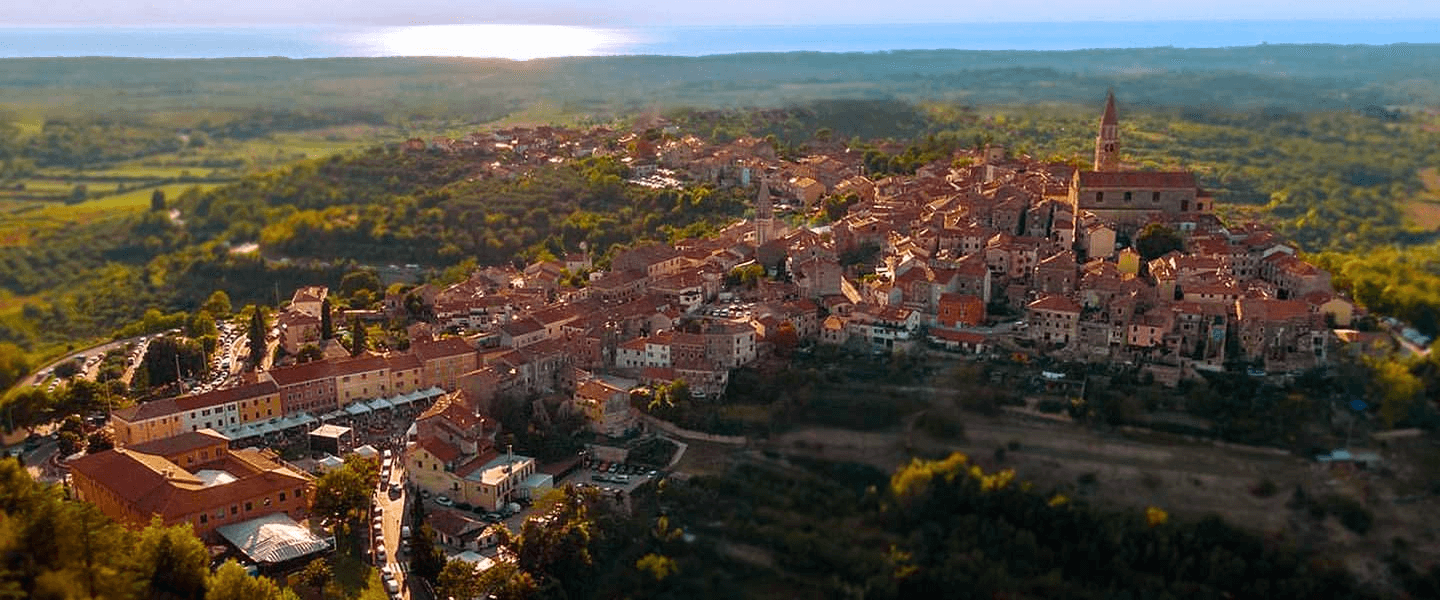
Grožnjan
The nearby Motovun might be the quintessential Istrian hilltop town, but Grožnjan is also well worth visiting. As is the case with many Istrian towns, it was settled during the Roman times, built under Venetian rule in Middle Ages, and well preserved up to today. The place was almost deserted after World War II, but in 1965 a group of artists decided to turn the town into an art colony, which remains up to the present. It’s a great accommodation spot for those who don’t need the sea, and it makes for a good base for exploring the hilly part of Istria. Learn more about Grožnjan here.
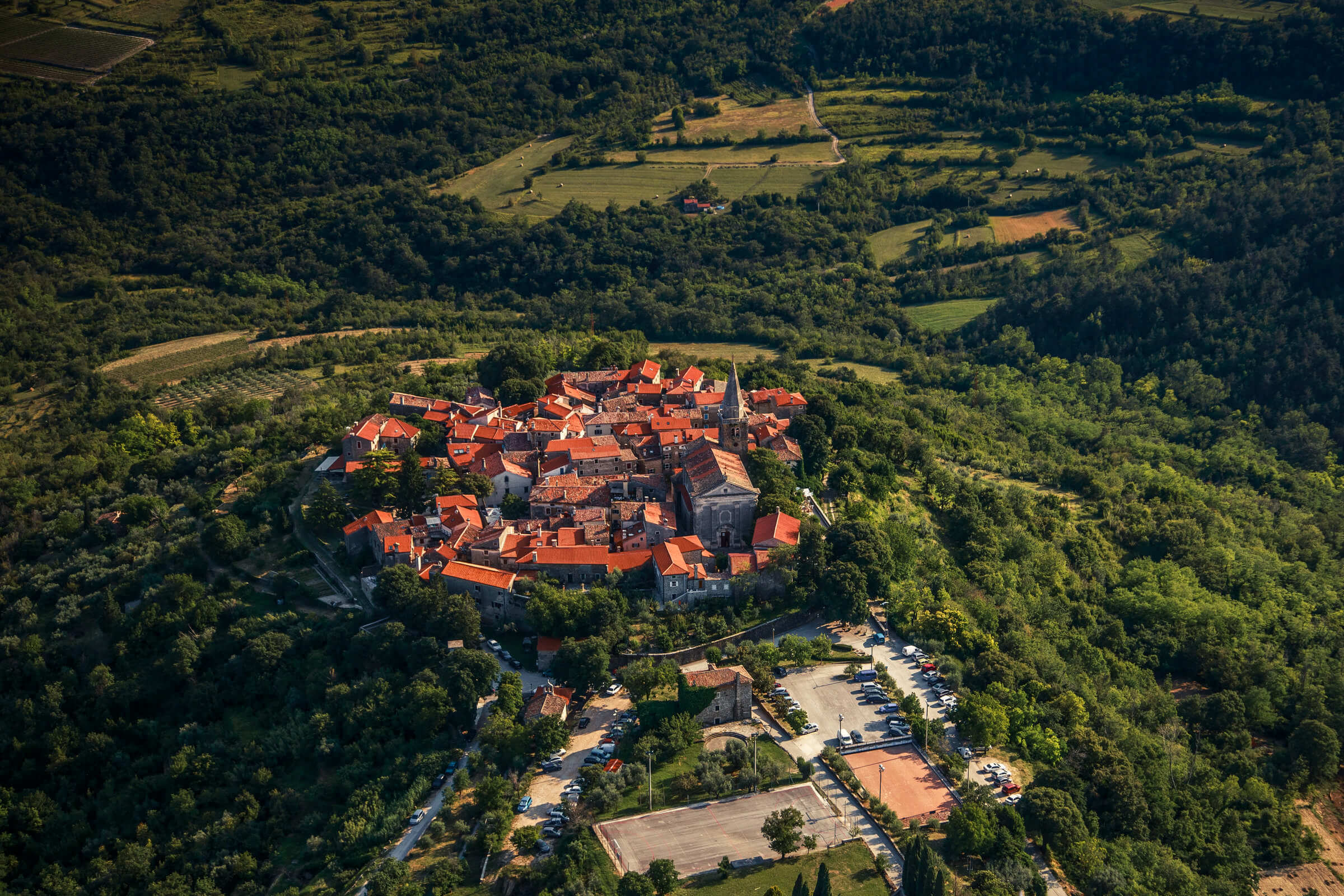
Photo: Mario Romulić
Pićan
Sometimes it is not easy to follow the traces of Pićan in historical sources because it hides under various names. The origin of the name Petina is attributed by some to the assumption that the Diocese of Pićan was the fifth in the world, with the word five (pet, in Croatian) having Celtic roots. Pićan is certainly inhabited in distant prehistory. The oldest parts of the Istrian hillfort were located on the hill of Calvary, north of today's settlement, and then it is assumed that the Celtic tribe Secusa lived there. In Roman times, probably in the same strategically well-chosen place, there was a military stronghold and the settlement of Petina. Learn more about Pićan here.
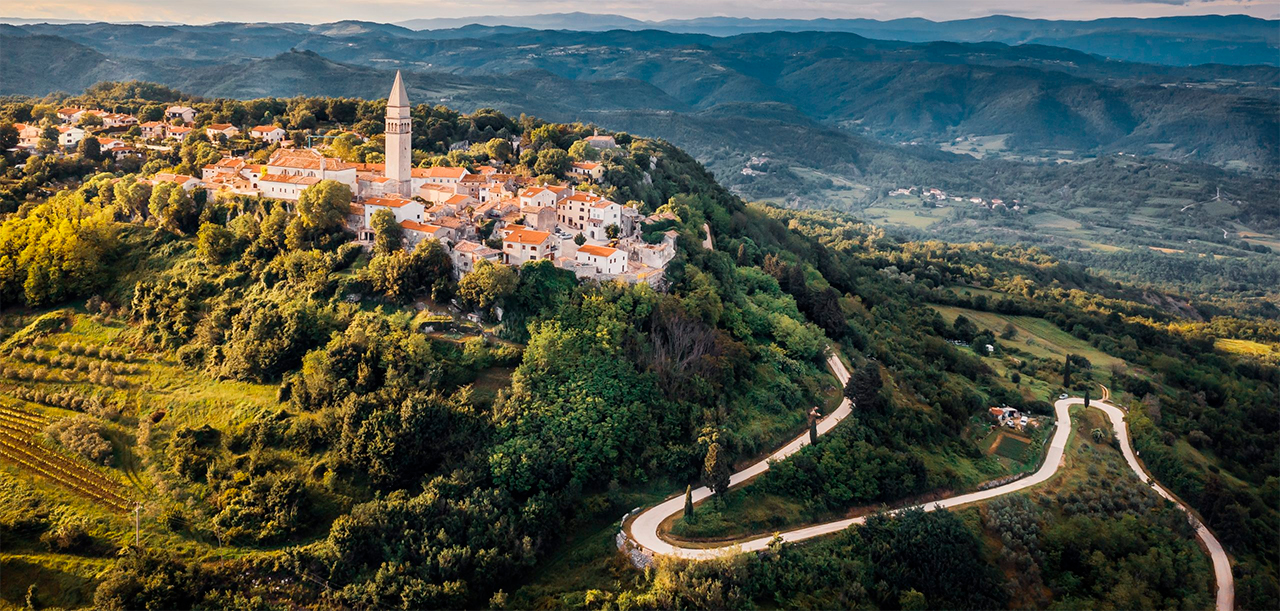
Image: Pićan municipality/Official website
For more on travel in Croatia, follow TCN's dedicated page.
Istrian Olive Grower Loses Land Bid as Ministry of Agriculture Backtracks on Tender Specifications
March 3rd, 2022 - Sandi Chiavalon, one of Croatia’s leading olive oil producers, was looking to invest around seven million kuna into a new olive grove in Istria.
Renowned olive grower Sandi Chiavalon was planning to lease 30 hectares of land in the Vodnjan area, close to another large olive grove owned by Oio Vivo, where he would plant nearly 10,000 olive trees and hire four new workers to manage the operation.
As reported by Glas Istre/Bojan Žižović, his plans fell through. In a strange turn of events, the Ministry of Agriculture didn’t approve the decision of the City of Vodnjan to lease state-owned land to Chiavalon, whose oil is produced in Vodnjan and exported to 23 countries worldwide.
This is a major agricultural project which, according to Chiavalon, would be beneficial for the wider community, including the national and city budgets. The state, however, says that Chiavalon and other local farmers cannot lease more than ten hectares of state land at once, as stipulated by the City of Vodnjan.
The decision of the state comes off as petty, as consent could have clearly been given in this case. As Chiavalon explained, the City’s land management plan indeed states that up to ten hectares of land can be leased to one party, but exceptions are allowed as long as it’s a single plot - as is the case here. The land in question is a single plot of about 70 hectares, divided by the City into six agricultural units of which Chiavalon was looking to lease three.
In the tender, whose content was approved by the Ministry of Agriculture, it was stated that whoever applies for one plot can lease up to 40 hectares of land on the said plot. Now that the tender is closed, the Ministry changed the tune and said that a maximum of ten hectares can be leased on the plot in question. As things stand, Chiavalon’s choices are to either lease only ten hectares or abandon the project entirely.
‘They called us from the City to have us choose which of those three plots of ten hectares we would lease. That doesn’t come close to what I wanted to do here - introduce an automated system, a completely new technology for grove maintenance… The question is whether we will take those ten hectares at all, we have to make an economic analysis of whether it’d be profitable to do it all on a land of that size. There are various systems in olive growing nowadays; intensive groves are robotically managed and processed. But for something like that we’d need a single large plot of land. We currently own 68 plots at 12 different locations. In those conditions, you can engage in organic olive growing only conventionally. When you have a single block of land, so to speak, such as Oio Vivo, only then can you introduce modern automated systems’, said Chiavalon.
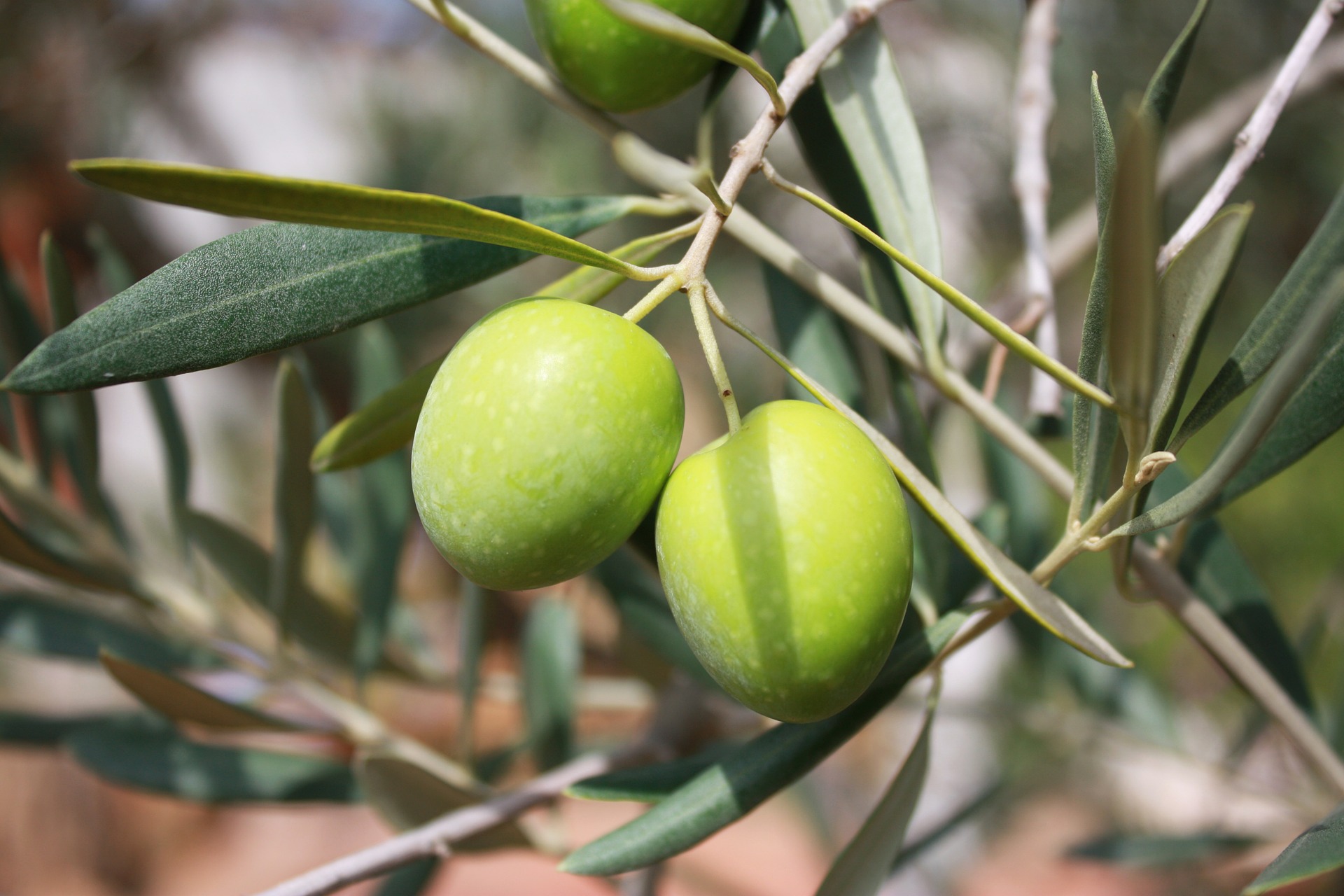
Asked whether there was a chance of him leasing more than ten hectares in this area in the future, Chiavalon said he might if a new tender was announced. ‘As we had to drop out, some other people would probably apply to get the land. However, the question is who can make it operational because it’s a considerable investment’, said Chiavalon.
The olive grower from Vodnjan would have doubled the count of his olive trees if he got the lease he was going after. He currently owns 30 hectares of land, but as mentioned above, split between 12 different locations, which results in production costs 20 to 30 percent higher than if he were to cultivate a single parcel of that size.
He says there’s always the option to increase their output by purchasing produce from other farmers, but they want to grow as much of their own produce as possible.
Asked who was to blame for what happened, Chiavalon said the problem might lie in the lack of communication between the Ministry and the City of Vodnjan. ‘But the City did not come up with the tender out of thin air, it had to do so with the consent of the Ministry, whose clerk then said it wasn’t implemented well. If it had come to another clerk, it would have probably passed.’
He also pointed out that the laws concerning agricultural land keep changing and aren’t implemented efficiently. ‘This tender was announced a year and a half ago and was not completed in that time. In the meantime, the plot could have been cleared and a new grove planted. In 20 years, there were only three tenders for the lease of state-owned agricultural land, which is a disaster’, he said, adding that at least one tender should be announced every year given how much uncultivated land there is in the area. ‘There are more than 3,000 hectares of uncultivated land in Vodnjan. There’s plenty of land for everyone who wants to work in agriculture. You just need to have the resolve’, said Chiavalon.
Kažuni, Traditional Stone Huts of Istria
February 21st, 2022 - Built entirely of stone, the cylindrical huts provided shelter to shepherds and farmers.
There’s no lack of magnificent architecture in Istria with all the masterpieces of times past preserved in this magical region. Think of the ancient Roman amphitheatre Pula Arena, the Euphrasian basilica in Poreč, or the countless bell towers standing tall on Istria's rolling hills.
And yet, none of the renowned monuments in Istria are as iconic as the humble kažun [ka-zhoon]. Essentially a trademark of the region, second only to the everpresent Istrian goat, the kažun is a traditional stone hut found all over central Istria, most commonly around the town of Vodnjan.
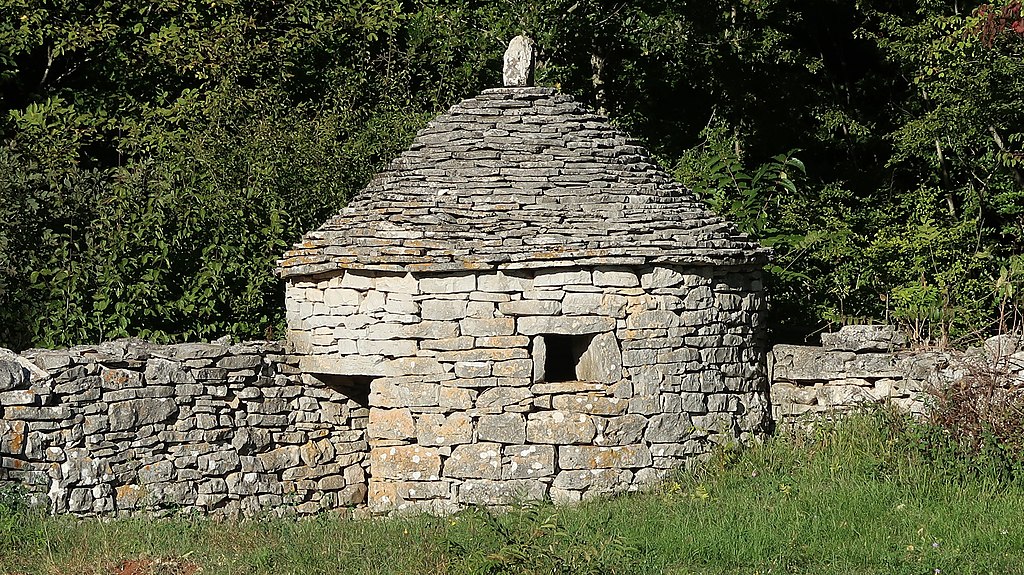 A kažun near Kanfanar, Istria
A kažun near Kanfanar, Istria
The kažun is a simple cylindrical structure built entirely of stone without the use of binding agents. They owe their distinctive appearance to a few rudimentary design features: they have a circular ground plan, a conical roof, and a small rectangular door. They vary in size, some are a masterful display of precision, some a bit more crude, some feature a tiny window or two, but overall, they’re unmistakable.
Their primary purpose was to provide shelter to shepherds and farmers who spent their days outdoors, working in the fields. A place to seek refuge from sudden rain or scorching summer heat, to have a midday meal and enjoy a moment of rest in the shade. They were also used as shelter for livestock, and at times for storage.
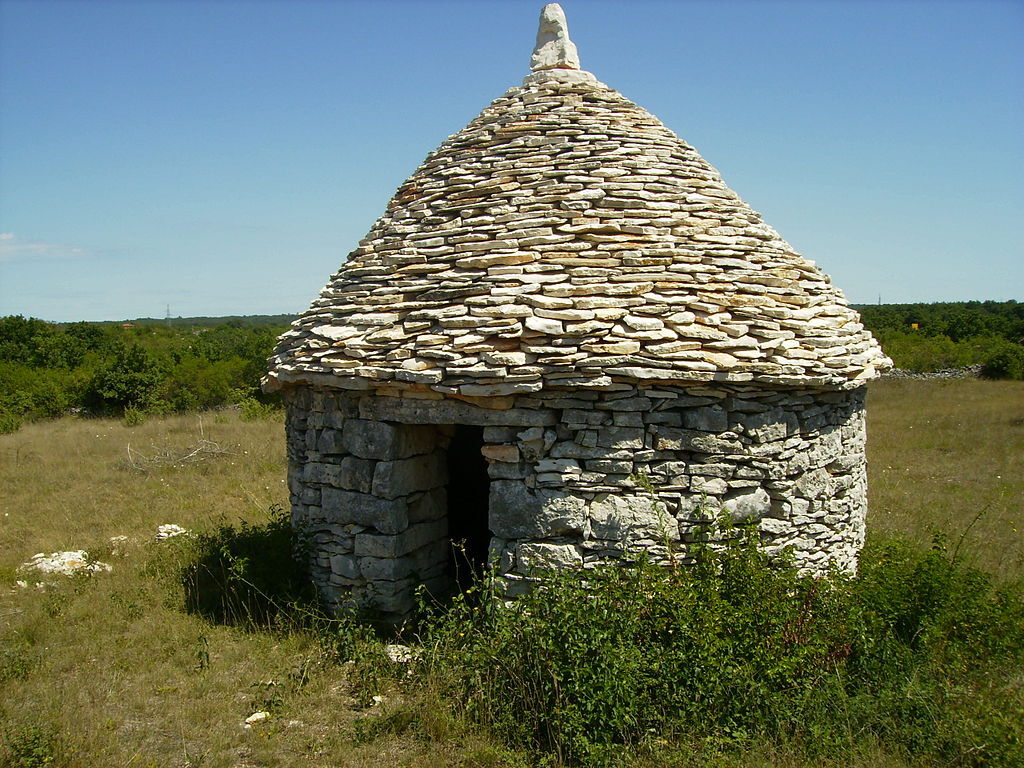 A kažun near Vodnjan
A kažun near Vodnjan
Similar structures reportedly existed on the Adriatic coast as early as in prehistoric times, and are found in varying forms all over the Mediterranean. It can’t be said for sure when the stone huts first appeared in Istria, but they grew to become a staple of the region, where they’re much more commonly found than in any other part of the Croatian coast.
They started popping up more frequently in the 18th and 19th centuries, when the sudden population growth in Istria resulted in increased agricultural production. The more crops and cattle to tend to, the more farmers working the fields, the higher the need for shelter and storage. It’s estimated that as many as 3000 kažun huts remain standing to this day in the Vodnjan area alone!
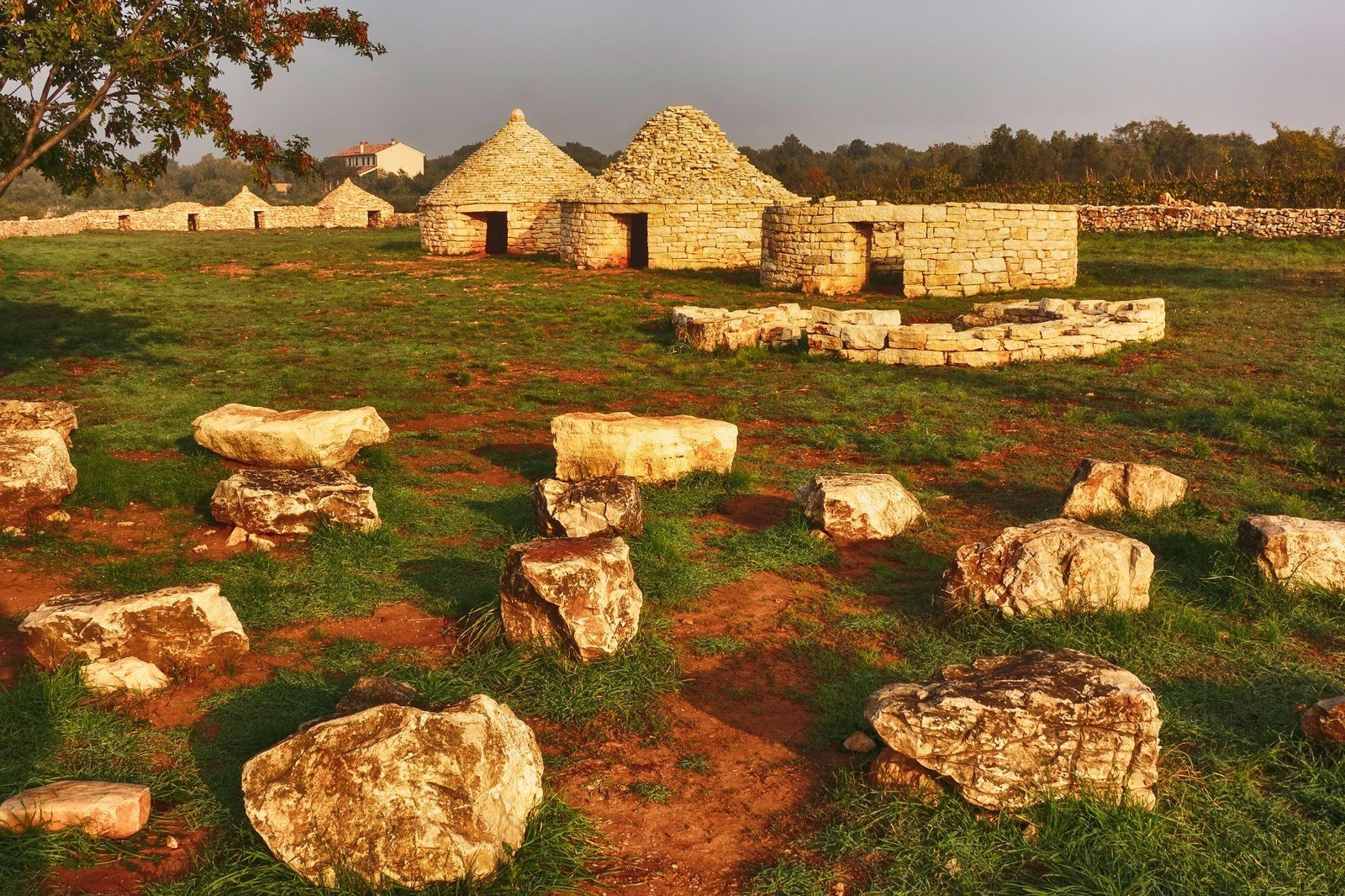 Kažun Park / vodnjan.hr
Kažun Park / vodnjan.hr
Speaking in modern terms, as far as sustainable architecture goes, you won’t find a better practice than the kažun. No other materials were used to build them other than stone, which wasn’t hard to source as the terrain is abundant in it. Whoever wanted to cultivate the land had to clear the soil of stone first, resulting in plenty of building material to work with. The kažun was a byproduct of agriculture in more ways than one, a clever feat of engineering that made sure no resource went wasted.
The traditional method of kažun construction was passed down from generation to generation, and even though there’s much less need for them these days, it definitely isn’t a lost art. There are many enthusiasts in Croatia keeping the dry stone building technique alive, and since the famous kažun is an integral part of Istrian identity, it’s no surprise that it has its own theme park.
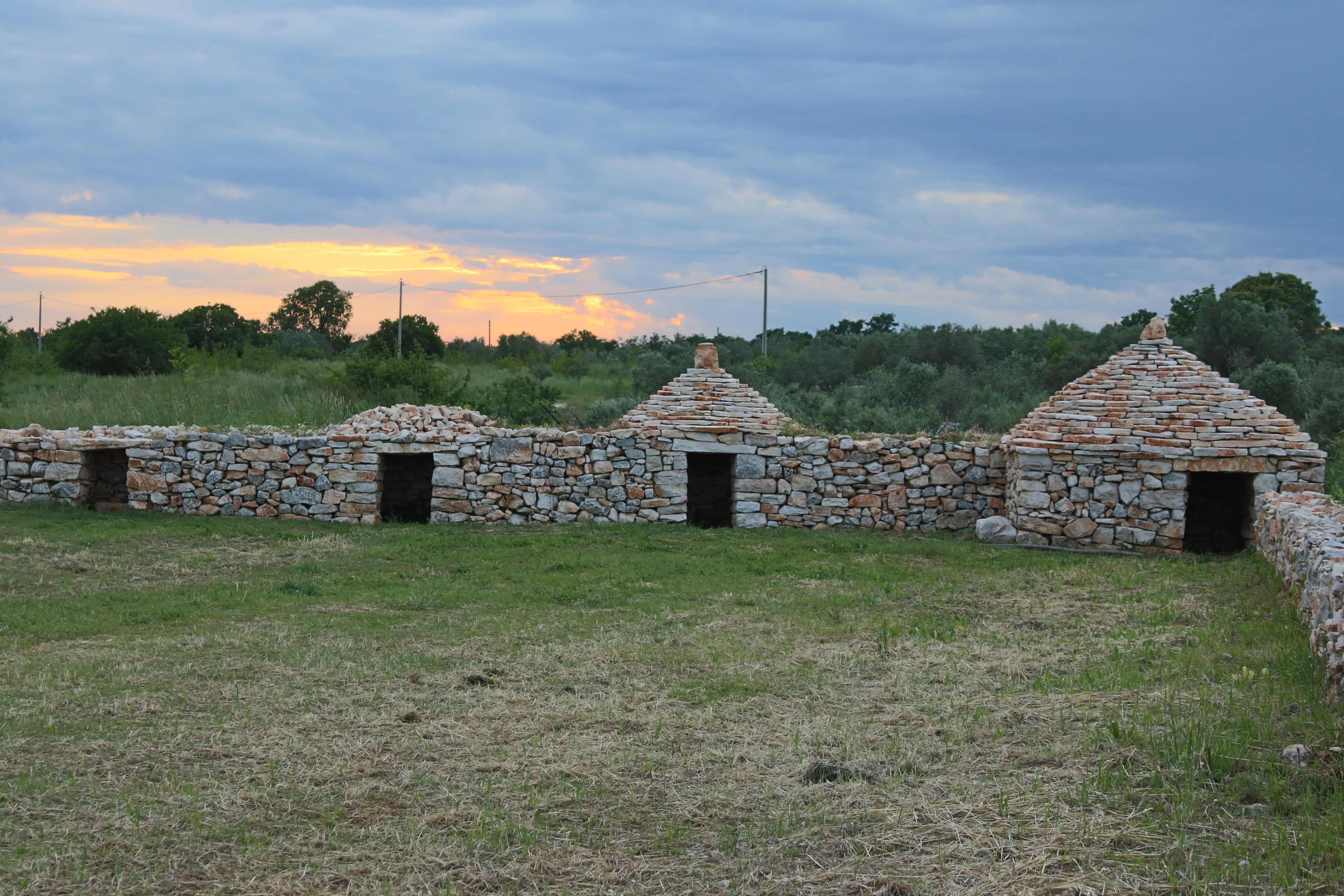 Kažun Park / vodnjan.hr
Kažun Park / vodnjan.hr
The Kažun Park near Vodnjan is referred to as a museum in the open, dedicated to the little huts that adorn the Istrian landscape. It aims to introduce the public to traditional building methods, with construction broken down into four distinct stages to make it easier to comprehend: the foundations, the walls, the roof, the finishing touches. Anyone can have a go at it, as the park doubles as a place to learn and practice dry stone building.
Even if you’re not inclined to try your hand at traditional skills, that doesn’t mean you can’t have a kažun of your own. They appear to be an endless source of inspiration for souvenirs, and can be purchased all over Istria in numerous forms varying from small-scale replicas to mass-produced keychains. In case you want the real deal, keep an eye out for craft fairs and similar traditional manifestations, as they’re your best chance of finding hand-built kažun models made of stone - a lovely, authentic keepsake to remind you of the time spent in terra magica.
Vodnjan Bursic Prosciutto Factory Makes Croatian Pancetta Crisps
January the 12th, 2022 - The Vodnjan Bursic prosciutto factory has created pancetta crisps (or chips if you're American), the very first of their kind to exist here on the Croatian market.
As Poslovni Dnevnik/Marta Duic writes, the Vodnjan Bursic prosciutto factory has introduced a new type of cured meat snack into their range, more precisely the Istrian pancetta/bacon crisp. The Vodnjan Bursic prosciutto factory began work back in 1994, when it was called "Kod Milana", and today they have six employees and a location at which they offer dishes based on their own cured meat products.
"The idea to open a prosciuttofactory came when my father Milan stopped working for a large company in Istria that was engaged in its production, it was a large plant producing almost 30,000 pieces of prosciutto a year, which is failing today," recalled Mikela Bursic Lisjak, whose the family started this business.
As she explained, all of the production that goes on at the Vodnjan Bursic prosciutto factory is entirely theirs, and they have prosciutto, pancetta, sausage, zarebnjak and spaletta (front pork leg) and cured meat snacks, more precisely pancetta crisps. According to Bursic Lisjak, at the time of the coronavirus pandemic, when everything was unstable and uncertain, they placed this novelty on the Croatian market.
“We decided to introduce a bit of modernisation into the tradition and we made the first Istrian pancetta crisps. These are actually the first cured meat crisps in Croatia, they're made from bacon, not flavoured potatoes. The sales of our products are moving forward, we're changing and trying to bring the product closer to the customer, while working with the heart of what we do to remain recognisable. The last two years have been difficult, but thanks to various sales channels, our customers have managed to reach their products and us,'' said Bursic Lisjak.
Although their main focus is on the domestic market and on producing top quality meat, and not so much on quantity, they export their products to nearby Austria and to neighbouring Slovenia. As Bursic Lisjak revealed, their plan is to turn to foreign markets in a couple of years, and they have already started negotiations with some of them.
"Our plan is to create a 'boutique' from the Vodnjan Bursic prosciutto factory. Our Italian neighbours have that dose of courage and a sense of beauty, and since I graduated as an interior designer, my goal has been to create something that will have not only good flavours but also beauty. Imagine looking through large windows at the products hanging and drying, you can choose what you want to taste or buy, and you do it all from some comfortable armchair or couch, it would be just like being at home,'' explained Bursic Lisjak.
For more, check out Made in Croatia.
New Mayors of Pula and Vodnjan Ditch Two Major Projects, Jutarnji List Reports
ZAGREB, 30 July 2021 - In just two days the new mayors of Pula and Vodnjan rejected two major projects by the Istrian Democratic Party (IDS) worth about HRK 90 million, Jutarnji List daily said on Friday.
Both projects are from the EU's Integrated Territorial Investment (ITU) mechanism, and a portion of the funding was grants from the European Regional Development Fund. But both independent mayors decided to forgo the grants arguing that the stakes of their respective cities in the investment projects were too high.
The aim of the projects was to convert a former industrial complex in Pula and an old oil mill in Vodnjan into tourism and cultural centres. A HRK 34.9 million grant agreement for the Mehanika polyvalent centre in Pula was signed in February, while Vodnjan's MMC Torcio project was awarded a HRK 7.15 million grant.
Both mayors said that the main reasons for rejecting the projects were too short implementation deadlines, an excessive credit burden on their budgets and too high bids for the performance of construction works.
For more on politics, CLICK HERE.
Vodnjan Company Infobip Continues on Upward Trajectory with Good Results
May the 15th, 2021 - The Vodnjan company infobip continues to go from strength to strength and showcase just what a Croatian enterprise can do, even in a climate which still makes doing business more difficult than it should be.
As Novac/Bernard Ivezic writes, Twilio has 4,500 employees, generates 1.76 billion US dollars in revenue annually and has a market value of 51.85 billion dollars. It is a company that the founders of the Vodnjan company Infobip - Silvio Kutic, Izabel Jelenic and Roberto Kutic - most often point out as their main competitor. By comparison, Infobip has about 3,000 employees, revenue of 1.25 billion dollars, and last year its market value exceeded an impressive 1 billion dollars.
Due to the difference of 1:52 in relation to Twilio, the first Croatian unicorn startup is preparing to be listed on the New York Stock Exchange at the end of next year or at the beginning of 2023 at the very latest. As one of the preparatory steps, the Vodnjan company Infobip aims to raise a 500 million dollar investment by the end of August 2021. It will purchase its own competition with those finds.
Twilio will not be on that list because of its value, but which smaller competitors will be there is problematic to predict because it also depends on the aspirations of their own respective investors. That's why it's good to understand who, in fact, Infobip's competitors actually are and in which direction the business in which they operate is developing.
Cost control
Both Infobip and Twilio are engaged in a business that is quite exotic. There are SMS messages, connections to applications (apps) on the web and on mobiles, chatbots, emails, support for the omnichannel communication of brands, geolocation solutions and many other similar services.
Both companies have developed a variety of software, which, like Lego bricks, companies can integrate into their own web and mobile applications, thus communicating with their users more easily and securely. Infobip and Twilio are therefore communication platforms that sell their software as a service (Communication platform as a Service - CpaaS).
The main reason why companies that sell over the internet, and today that is almost all of them, have a need for their services is the necessity to control costs and communication to all their customers, no matter where they're located. This cannot be offered by any teleoperator, not even the likes of Starlink.
Although Elon Musk created the first true global operator with Starlink, meaning one that has its own planetary infrastructure, it doesn't offer mobile services. Large global telecoms, which form the backbone of the Internet, such as Level 3, Telie, GTT, Cogent and NTT, also show no interest in offering companies software solutions for specific forms of communication. The only ones slowly moving towards the field where Twilio and Infobip compete are Amazon, Google and Microsoft.
Currently, another company that the Vodnjan company Infobip founders often cite as a competitor is the Swedish Sinch. It has a market value of 9.76 billion dollars, revenue of just under 1 billion dollars and more than 1,600 employees. Sinch follows a similar tactic and is intensively active in acquisitions.
Recently, Sinch has acquired SAP’s SAP Digital Interconnect business unit, followed by Brazil’s Wavy and the largest independent voice communications operator in the US, Inteliquent.
A European challenger
Infobip's competitor is also RingCentral, an American company that offers other companies similar communication solutions as Zoom and MS Teams. RingCentral, which had revenue of 1.2 billion dollars last year, also offers a communications platform as a service, forcing Microsoft and other major technology companies to potentially enter the segment.
Finally, there is another major European challenger in the mix, MessageBird. This Dutch company is particularly interesting because it promotes business in a very similar way to Croatia's own Infobip. It boasts of collaborating with giants such as Facebook, Google, Uber and WhatsApp and offering an omnichannel communication platform. Behind MessageBird are (financially) the largest VC fund in Europe, Atomico, Y Combinator and Accel.
In addition, the Dutch are also targeting expansion into the United States. Back in April, they raised a 800 million dollars investment to buy the American mail marketing company SparkPost, and this is just the beginning of the list in the CPaaS market, which also includes the Indian Plivo, the American Vonage Communications and many others, so it is obvious that consolidation will follow in the next period.
For more on Infobip and companies like it, follow Made in Croatia.
Vodnjan Giant Infobip Announces Third Acquisition in Just 7 Months
May the 7th, 2021 - The Vodnjan giant Infobip is very well known at this point for its wild success and seemingly almost constant acquisitions. The company has since announced its third large acquisition in just seven months.
As Poslovni Dnevnik/Lucija Spiljak writes, the Vodnjan giant Infobip has announced a new, third acquisition in just seven months. This time it is the Irish IT company Anam Technologies, the world's leading provider of SMS firewall services. Infobip and Anam will now jointly provide technical solutions for more than 700 mobile operators globally, covering 64 percent of the world’s mobile devices.
The value of this acquisition remains unknown, and payment was made by a combination of cash and Infobip shares.
As they have pointed out from the Vodnjan giant Infobip, the acquisition unites the strengths of both companies in the segment of security in message traffic and monetisation with an even more complete portfolio of solutions from which both mobile operators and end users will benefit. Anam's team is now to join Infobip's department in charge of strategic partnerships with mobile operators.
Their business customers will thus have at their disposal a better and more comprehensive offer, which includes continuous 24/7 professional support, more detailed analysis and more accurate reporting, with an even greater number of direct connections to mobile operators from around the world.
"With the acquisition of Anam, we've strengthened our leading position in providing a high level of security and protection of messages to mobile operators and helped them increase value within their own sector, but also improve relationships with end users. I'm looking forward to our mutual future successes,'' said the executive director of Infobip, Silvio Kutic.
Infobip's communication platform processes more than 14 billion user interactions per month through a number of communication channels, in more than 190 countries around the world.
Business users of both companies will have at their disposal a rich offer of services, a connected solution for a superior end-user experience and a better solution for monetising A2P (Application-to-Person) traffic. Together, both companies will now provide the most complete supply chain globally in the A2P SMS segment.
This sense of excitement is also shared by Anam itself, whose CEO Darragh Kelly pointed out that this acquisition is a confirmation of the importance of mobile messaging in a growing digital environment.
“The security and integrity of mobile networks are key parts of the messaging ecosystem. In order for the industry to continue to grow, it's necessary, on the one hand, for the messaging channel to be successfully protected from spam and fraud, and, on the other hand, for the position of mobile operators, businesses and end users to be protected. We believe that we're achieving this by joining the Infobip family, which brings together the two best messaging companies in the segment of A2P communication security. Our joint product portfolio provides a rare and exceptional offer to mobile operators. By joining Infobip, we intend to continue our growth and provide added value to our users,'' said Darragh Kelly, CEO of Anama.
Both companies are consistently at the top of the global ROCCO report in the A2P SMS Firewall segment and are winners of the Juniper Future Digital Awards. The company also points out that Infobip and Anam share the same values and culture based on team spirit and innovation with a strong focus on the experience of both employees and users.
To briefly recall, the Vodnjan giant Infobip took over the leading regional technology conference Shift less than one month ago, and in 2020 they concluded a sales contract with IT company Amdocs to take over the American company Open Market, a leading B2B provider of mobile messaging solutions.
For more, follow our dedicated business section.
The Story of Lady, Who Still Waits for Her Friend in Vodnjan
May 1, 2021 - Everyone knows the story of Hachiko, the dog who waited years for its deceased owner. But the story of Lady, from Vodnjan, is just as sweet and heartbreaking.
When we talk about dogs, the first thing that comes to mind is their unmatched loyalty. It is well known that dogs do not take long to show their affection to younger children or that they are often inseparable from their owners. Stories like those of Hachiko, the famous Japanese dog who, even after the death of her owner, never lost faith to one day meet him again.
Another that would prove that dogs indeed love forever, is the story of Lady, from Vodnjan.
As Jutarnji.hr reports, Lady is a 16-year-old dog who immediately fell in love with all of her family when she arrived in their lives. However, as said by Marijan Kancijanić, her real love story happened when she was five.
That great love was with her neighbor, Salko. Why? No one knows, but the two of them loved each other endlessly. His house was about 80 meters away from hers, in a parallel street. Close enough to go to him every day. The world has never seen such love.
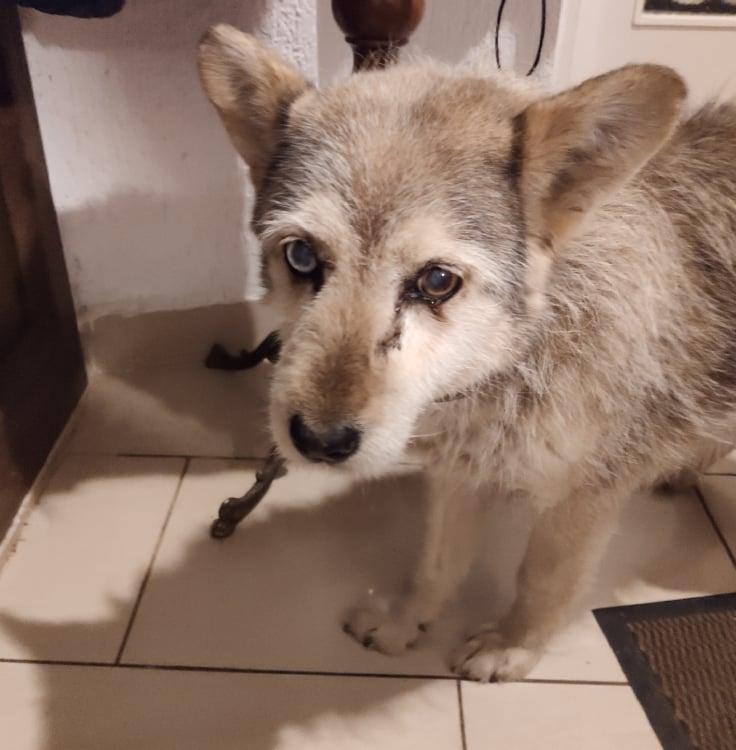
Credit: Private album.
''She followed him to the garden and the store every morning for an hour or two. They had their own timing. If she didn't show up one day, because she would be with us in the olive groves, he would definitely come that evening or the next morning to ask if she was okay. Also, when she came home with us, she would walk away for at least a minute to see him or at least sniff in front of Salko's house. I don't know exactly why, I guess to see if he is well, because he was a kidney patient'', says Marijan.
She was once trapped under the wheels of a car, so she was not there for a couple of days because she was recovering at home. Salko came to visit. He was crying, worried about the little one, and her tail would start working like crazy when she saw him. Sure, everything hurt, but when she saw him, everything was a little better.
''It didn't take long. About a year and a half after they connected, Salko passed away. As he left, part of her spirit disappeared with him. That was a full four years ago. From then until today, every morning and afternoon, Lady is constantly waiting in front of Salko's door'', explains Marijan.
And so, today, every day, regardless of rain, sun, or snow, Lady goes to Salko's house two or three times a day, at a time known only to her, depending on the season. She lays down on the sidewalk, her head facing the entrance, her sad gaze fixed on the door: waiting for him to appear. It doesn’t matter that he hasn’t appeared in four years, time is a human invention anyway and means nothing to dogs.
She understands that the sun has risen and set many times since her friend is gone, but she knows he will return. One day, Lady will come to the door and he will open it for her, hug her, give her a nice biscuit, and then the two of them, together, will slowly walk to the store, through their favorite streets, talking. Salko will tell her what is bothering him, and she will understand him in her canine way. And it will be as it used to be. One man and one dog, for a time beyond human comprehension, the discovery of two kindred spirits in this vast universe.
''I know she hopes to see at least one more time the man who took her everywhere with him, shared meals with her, talked to her... The late Salko entrusted his wife to take care of Lady for life. On his deathbed, he asked: "Is Lady coming?". Several times, when we would meet on my doorstep, he liked to hear the verses of Dino Dvornik's song from the Ballad of Shark: "Because a man is a man, and a dog is a dog, it's worth it for everyone, but not for us...", concludes Marijan.
If you want to know more about dogs and pets in Croatia, be sure to check Total Croatia's guide HERE.
For more news about Croatia, visit Total Croatia News dedicated page.
Vodnjan Company Market Leader in Technology for Smart Ship Concept
A Vodnjan company called Sentinel Marine Solution has signed a contract with the Hanse Group, which entered into the OEM segment and thus opened the door to mass production for shipbuilders.
As Novac/Jozo Vrdoljak/Privredni.hr writes on the 14th of January, 2020, the Vodnjan company Sentinel Marine Solution, with the exception of Vodnjan, has offices in Zagreb and Ljubljana (Slovenia), along with its manufacturing facility. The sixteen employees who work there are focused on development, aided by the 1 million euro venture capital fund of South Central Ventures and the capital of several other partners.
''After five years of development, we've been recognised by the world's largest players such as the Hanse Group, the second largest yacht and motorboat manufacturer in the world. Each of their ships will have a Sentinel system and will be on the Sentinel platform. In addition to them, we collaborate with the brands Fjord, Sealine, Privilege, Dehler, Moody... Our system is also used by Beneteau First and many well-known shipbuilders from Australia to America.
Sentinel also successfully integrates partner technologies such as Torqeedo's electric motors or CZone's most famous digital switching and monitoring provider. Even the great Garmin Marine has chosen Sentinel for its own product range as a telematics solution for business clients, shipbuilders. What we do with shipyards involves a lengthy process, and the results of collaborating with big names are now visible. We've developed into an independent company that operates well,'' explained Draško Andrić, sales and development manager of the Vodnjan company.
Sentinel Marine Solution was launched as a Slovenian-Croatian startup, initially as a basic monitoring model for all ship's devices and a provider of marine internet for private users and charter fleets. In just a few years, Sentinel has become the market leader in developing technologies for smart ships. One of Sentinel's first clients was Jack Shuri, a pioneer of the charter industry in the Croatian part of the Adriatic sea, which he supported at an early stage of development.
''In addition to Surija, the first users were the pioneers of the charter industry in Croatia, such as Ivica Buble, the owner of Dalmatia charter from Trogir. The Sentinel Boat Monitor is actually a gateway that collects all the data on all instruments on board that are connected to the NMEA 2000 network. The read condition communicates with our main gateway, after which any warnings are sent to the shipowner or someone who maintains it.
It's a standard that sets itself as the future of all nautics. Shipbuilders are now our focus. It's a platform that enables the communication of all of the ship's devices and the ship, that is, its users for the purpose of a better navigation experience and easier and cheaper maintenance of the vessel. Due to complete control of our own system, we have our own production of hardware and software, which is a great advantage for us, but it's also necessary if you want to work with the Tier 1 sector,'' stated Andrić.
According to Draško Andrić, today, the Sentinel Marine Solution (in-house solution) is a leader in the market for connected vessel technology, a huge title for this Vodnjan company.
''The service is completely in-house, which means that every aspect of it has been developed in Sentinel. This gives us stability and a system independent of external partnership development. Sentinel's advantage and strength lies in the fact that it can connect to all ship systems and interact with almost all instruments on board, read them and understand what happens on board when no one is aboard,'' he explained.
In the last four to five years, Sentinel has, according to this Vodnjan company's managers, become a leading provider of monitoring services in the Adriatic and worldwide.
Make sure to follow our dedicated Made in Croatia page for much more.
Days of Olive Oil Sees Istrian Product Draw President's Praise in Vodnjan
Istrian olive oil and Dalmatian olive oil could hold an eternal battle when it comes to deciding just ''who'' is better. While both are excellent and have won awards, there's just something about Istrian olive oil that keeps the international praise rolling in, and the fifteenth Days of Olive Oil being held in Vodnjan, Istria, is drawing praise for Istria's golden liquid from no less than the Croatian President.
As Glas Istre/Danijela Basic-Palkovic writes on the 15th of November, 2019, the President of the Republic of Croatia, Kolinda Grabar-Kitarović, opened the fifteenth edition of Days of Olive Oil - Giornate dell 'olio d'oliva novello yesterday, which will be held in Vodnjan until Sunday.
At this international event which is featuring more than 100 Croatian and foreign olive oil exhibitors, all lovers of top virgin oils will be able to taste the best products from not only Croatia but the wider region, and the variety and the rich offer will certainly be attractive to various consumer groups, as well as lovers of gastronomy and top products.
Kolinda Grabar-Kitarović said that olive is absolutely part of Istrian culture.
"Olive growing and olive cultivation have been being passed down, especially here in Istria, from people's very beginnings in this area. Olives connect us with the whole Mediterranean and its traditions, and olive oil is an important part of our identity. When I go to restaurants all over the world, everyone boasts about their oils, and I always bring them a bottle of our Croatian oil and I hope that this way we'll be able to spread the word about Croatian olive oil all over the world,'' said President Grabar-Kitarović.
''I try to encourage small and medium-sized enterprises that I believe are the foundation of our economy. I'd recommend everyone, especially olive growers, to promote olive oil a little more on the continent, because I'm afraid that people there are still not yet aware of what kind of gold we're producing,'' said Grabar-Kitarović.
She also stated that she has been following the development of olive growing for years, saying that Croatia can boast a huge shift in quality, but that there is still much work to be done on quantity.
Make sure to follow our dedicated lifestyle page for more.


